Wrinkle Treatment in Hungary
Search and Compare the Best Clinics and Doctors at the Lowest Prices for Wrinkle Treatment in Hungary

Find the best clinics for Wrinkle Treatment in Hungary
With Medijump you can browse 7 facilities offering Wrinkle Treatment procedures in Hungary. The cheapest price available is $214 in Budapest. And for the cheapest price globally, prices start from $53 in Thailand.
Wrinkle Treatment in Budapest
Price: $ 214
Thailand offers the best prices Worldwide
Price: $ 53
From 76 verified reviews
Kamyar Kashani, 17 September 2020
The very best in Hungary!
Oxygen Medical, located in Central Budapest, Budapest, Hungary offers patients Wrinkle Treatment procedures among its total of 39 available procedures, across 3 different specialties. The cost of a Wrinkle Treatment procedure ranges from $667 to $2,562, whilst the national average price is approximately $447. There are many specialists available at the Clinic, with 6 in total, and they are not accredited by any recognized accreditations institutes
Art Real Plastic Surgery, located in Central Budapest, Budapest, Hungary offers patients Wrinkle Treatment procedures among its total of 29 available procedures, across 1 different specialties. The cost of a Wrinkle Treatment procedure starts from R$1,069, whilst the national average price is approximately R$2,235. All procedures and treatments are undertaken by the lead specialist at the Clinic, and they have multiple recognized accreditations, including: ISAPS (International Society of Aesthetic Plastic Surgery)IPRAS (International Confederation for Plastic Reconstructive & Aesthetic Surgery)
Dr. Molnar Clinic, located in Central Budapest, Budapest, Hungary offers patients Wrinkle Treatment procedures among its total of 37 available procedures, across 2 different specialties. The cost of a Wrinkle Treatment procedure starts from R$1,194, whilst the national average price is approximately R$2,235. All procedures and treatments are undertaken by the lead specialist at the Clinic, and they are not accredited by any recognized accreditations institutes
Premium Plastic Surgery Clinic - Budapest, located in Central Budapest, Budapest, Hungary offers patients Wrinkle Treatment procedures among its total of 49 available procedures, across 9 different specialties. The cost of a Wrinkle Treatment procedure starts from R$1,597, whilst the national average price is approximately R$2,235. All procedures and treatments are undertaken by the lead specialist at the Clinic, and they are not accredited by any recognized accreditations institutes
Szeptest Cosmetic Surgery, located in Central Budapest, Budapest, Hungary offers patients Wrinkle Treatment procedures among its total of 29 available procedures, across 1 different specialties. The cost of a Wrinkle Treatment procedure starts from R$1,652, whilst the national average price is approximately R$2,235. All procedures and treatments are undertaken by the lead specialist at the Clinic, and they are not accredited by any recognized accreditations institutes
Perfect Laser, located in Central Budapest, Budapest, Hungary offers patients Wrinkle Treatment procedures among its total of 8 available procedures, across 4 different specialties. The cost of a Wrinkle Treatment procedure ranges from R$3,721 to R$4,790, whilst the national average price is approximately R$2,235. There are many specialists available at the Clinic, with 6 in total, and they are not accredited by any recognized accreditations institutes
- Home
- Hungary
Compare Before & After Photos of _procedure_photos.phpWrinkle Treatment
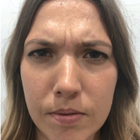
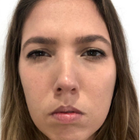
Front view
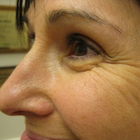
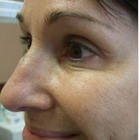
Half-side view
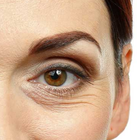
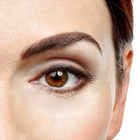
Front view
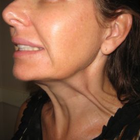
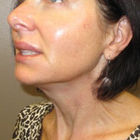
Half-side view
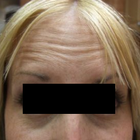
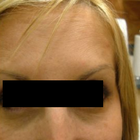
Front view
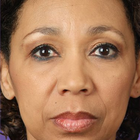
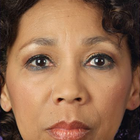
Front view
WHY US?
At Medijump, we're making medical easy. You can search, compare, discuss, and book your medical all in one place. We open the door to the best medical providers worldwide, saving you time and energy along the way, and it's all for FREE, no hidden fees, and no price markups guaranteed. So what are you waiting for?

Free

Best Price

Widest Selection

Risk-Free
What you need to know about Wrinkle Treatment in Hungary

Ultherapy is an FDA-approved non-invasive skin tightening treatment. Known as the non-surgical alternative to facelift surgery, Ultherapy uses a focused ultrasound beam to boost collagen production in the deeper layers of your skin. Collagen is a natural protein that comes in numerous different types. It gives firmness and tightness to your skin. As we grow old, collagen loses its strength and firmness and shows laxity. This procedure gives collagen its strength back.
While a facelift offers more obvious results, it leaves scars and has other associated risks such as nerve damage and clot formation. Ultherapy, on the other hand, requires plenty of time to make its effects visible. Also, more sessions are needed to maintain its effects. It strengthens the loose skin of your face and neck and nullifies the effects of ageing on your face. It has the advantage that there is no downtime for it. You can apply makeup immediately after the procedure. This procedure needs to be repeated every six months or a year.
Ultherapy tightens and strengthens your loose skin without giving incisions and stitches. Instead, a focused ultrasound beam is used to lift your skin. Before going through the therapy, you have a lower eyebrow line, droopy lower eyelid, flat saggy cheeks, and loose skin of the neck. After Ultherapy, your skin looks glowing and rejuvenated, cheeks look healthy and plumped, and eyelids look lifted.
What does a Wrinkle Treatment Procedure Involve?
The procedure begins with cleaning your skin with an alcohol swab to kill any germs present at the spot. A specialized gel is applied to your skin. The focused ultrasound beam is used to produce thermal effects in the deeper layers of skin. The device is pressed firmly on to the skin of areas that needs strengthening. This induces new collagen production in these layers and gives firmness to the previous one. Ultrasound rays are applied over the areas where skin tightening is intended, such as the face and the neck. The time of procedure varies with the areas which are to be treated. It produces thermal effects which can be the cause of discomfort during the process. It lasts for a small period of time when the energy is being delivered into skin layers. This slight discomfort is a sign that the collagen-boosting process has been started.
How Long Should I Stay in Hungary for a Wrinkle Treatment Procedure?
Ultherapy takes 1 to 1.5 hours or more depending upon the dimensions of the area which is being treated. Since it is an outpatient procedure, you can leave for home on the same day of the treatment. However, you should plan to stay in Hungary for at least 5 days after your procedure. This will allow for the initial recovery and follow-up check-ups. Slight swelling and discomfort are normal during your stay. However, if it aggravates, there might be something wrong. Your health conditions are monitored during this duration.
What's the Recovery Time for Wrinkle Treatment Procedures in Hungary?
As there is no downtime, you need not take any day off from work. You can get back to work immediately after the therapy. Minimal bruising is reported at the sites of Ultherapy where bones are present. This discomfort is for a small period of time. There might be tenderness and swelling in your skin which can last for one month after the procedure. 3 to 6 months are required for the results to become evident. Keep in mind that everyone continues to age and no process or treatment can stop aging. Therefore, the effects of Ultherapy subsides after a few years. Touch up treatments help to maintain its effects.
What sort of Aftercare is Required for Wrinkle Treatment Procedures in Hungary?
After going through Ultherapy, take care of the following points to look after you:
- Avoid contact with direct sunlight for 2 to 3 months after this therapy. At the first place do not go outside in day time. If it is necessary, wear a strong sunscreen to protect your skin from harmful rays of light.
- Do not apply any product on your skin which can cause allergy or irritation.
- Use icepacks to ease you from itching and swelling. They are very effective in reducing redness.
- Do not massage and rub your skin for at least 1 to 2 weeks. It can aggravate redness and irritation in your skin.
- Cover yourself properly when going out after the procedure.
- Moisturize your skin twice or thrice a day. Use a moisturizer prescribed by your doctor.
What's the Success Rate of Wrinkle Treatment Procedures in Hungary?
This therapy is almost always successful. Results vary and their time of appearance varies. Some people show more positive results while others show a moderate difference in their physical appearance. But it works on all. According to a study, 65% of the patients reported improvement in their skin quality after 2 to 8 months. While 67% seemed very satisfied with the results after only 3 months. The success of Ultherapy depends upon your genes and other factors too.
Are there Alternatives to Wrinkle Treatment Procedures in Hungary?
The following are some alternatives to Ultherapy:
- Microcurrent facelift: this involves electrical stimulation of your tissues, skin, and muscles to increase their tone and impart a rejuvenating effect. Also, electrical current boosts collagen production and increases blood circulation in your body. It shows immediate results which can last for 48 hours only. You can opt for it for special events.
- Dermal fillers: also known as a liquid facelift, dermal fillers such as Sculptra, Juvederm, and Restylane are injected into your skin to give your facial features a lift. It treats wrinkles and aging lines on your skin. Each dermal filler works differently in different parts of your body.
- Laser facelift: laser light is used to stimulate inner layers of your skin to boost collagen production. This requires 30 minutes with no downtime.
All the techniques mentioned above are minimally invasive with almost no downtime, pain and incisions.
Overall, you will look younger than your actual age. But its effects last for only 12 to 15 months, after which you will need touch ups.
Whilst the information presented here has been accurately sourced and verified by a medical professional for its accuracy, it is still advised to consult with your doctor before pursuing a medical treatment at one of the listed medical providers
No Time?
Tell us what you're looking for and we'll reachout to the top clinics all at once
Enquire Now

Popular Procedures in Hungary
Prices Start From $111

Prices Start From $16

Prices Start From $28

Prices Start From $5

Recommended Medical Centers in Hungary for Wrinkle Treatment

- Interpreter services
- Translation service
- Religious facilities
- Medical records transfer
- Medical travel insurance
- Health insurance coordination
- TV in the room
- Safe in the room
- Phone in the room
- Private rooms for patients available

- Interpreter services
- Translation service
- Religious facilities
- Medical records transfer
- Medical travel insurance
- Health insurance coordination
- TV in the room
- Safe in the room
- Phone in the room
- Private rooms for patients available

- Interpreter services
- Translation service
- Religious facilities
- Medical records transfer
- Medical travel insurance
- Health insurance coordination
- TV in the room
- Safe in the room
- Phone in the room
- Private rooms for patients available

- Interpreter services
- Translation service
- Religious facilities
- Medical records transfer
- Medical travel insurance
- Health insurance coordination
- TV in the room
- Safe in the room
- Phone in the room
- Private rooms for patients available

- Interpreter services
- Translation service
- Religious facilities
- Medical records transfer
- Medical travel insurance
- Health insurance coordination
- TV in the room
- Safe in the room
- Phone in the room
- Private rooms for patients available

- Interpreter services
- Translation service
- Religious facilities
- Medical records transfer
- Medical travel insurance
- Health insurance coordination
- TV in the room
- Safe in the room
- Phone in the room
- Private rooms for patients available

- Interpreter services
- Translation service
- Religious facilities
- Medical records transfer
- Medical travel insurance
- Health insurance coordination
- TV in the room
- Safe in the room
- Phone in the room
- Private rooms for patients available

- Interpreter services
- Translation service
- Religious facilities
- Medical records transfer
- Medical travel insurance
- Health insurance coordination
- TV in the room
- Safe in the room
- Phone in the room
- Private rooms for patients available

- Interpreter services
- Translation service
- Religious facilities
- Medical records transfer
- Medical travel insurance
- Health insurance coordination
- TV in the room
- Safe in the room
- Phone in the room
- Private rooms for patients available

- Interpreter services
- Translation service
- Religious facilities
- Medical records transfer
- Medical travel insurance
- Health insurance coordination
- TV in the room
- Safe in the room
- Phone in the room
- Private rooms for patients available
Wrinkle Treatment in and around Hungary
About Hungary
Positioned in the core of Central Europe and completely surrounded by land, this historically enriched nation is among the world's top 15 tourist favorites. It's a hotspot teeming with UNESCO World Heritage sites, a testament to its rich past.
The country boasts eye-catching architectural marvels and relaxing thermal baths and spas, the most talked-about amongst these being the Szechenyi baths nestled in the nation's capital, Budapest. This combination of cultural heritage and relaxation opportunities lends the country a unique charm that continually lures in visitors from around the globe.
While Hungary possesses only one facility accredited by the Joint Commission International, it leans on the trusted expertise of its local accreditation board. This board, licensed by pillars of authority such as the Hungarian Ministry of Health and the State National Health Commission and Medical Service, ensures the maintenance of high healthcare standards.
Each year sees a burgeoning number of medical tourists making the journey to Hungary. Many among them travel specifically for Wrinkle Treatment procedures. Dental and cosmetic treatments, in particular, draw significant attention due to Hungary’s competitive pricing, often regarded as the most economical across Europe.
Popular Parts of Hungary
With less than 10 million inhabitants sprinkled across an approximate area of 93,030 square kilometers, Hungary may appear relatively modest in size. However, within its boundaries, it hosts an impressive number of UNESCO World Heritage Sites. Alongside these acclaimed landmarks, it also boasts a multitude of exquisite attractions, making it a country that belies its physical size with its magnificently rich offerings.
- Budapest is the capital of Hungary. From beautiful boulevards, extraordinary architectures, an abundance of hot springs, to sophisticated food and an electric nightlife. Budapest has everything to satisfy everyone. Castle Hill is one of the most visited places in Budapest with beautiful buildings dating back to the 14th and 15th centuries.
- Eger is known for its castle, historic buildings, and thermal baths and also for its red wine. There are many festivals and celebrations centered around wine and remember to enjoy the wine-tasting when visiting Eger.
- Debrecen is an important city in Hungarian Protestantism. The city has many religious sites and museums. Tourists should visit the Great Church, St. Anne Cathedral, and the Deri Museum. Debrecen also has a lot of bars and nightclubs.
- Siofok is located at the southern coast of Lake Balaton. The small town also has beautiful beaches, making it one of the most popular summer holiday destinations. The town has many entertainment options, tourists can spend a lovely day on the beach next to Lake Balaton or enjoy the food in beachside bars and restaurants.
- Szeged is known as ‘The City of Sunshine’ because it has wonderful weather. The city offers beautiful parks, cultural scenes, and amazing street side cafes. Szeged has a youthful vibe as it is a university town. In the summer, there are many festivals such as the Open Air Theater festival.
Weather and Climate in Hungary
Hungary is characterized by the presence of four clearly demarcated seasons.
- Hungarian summers, spanning from June to August, are typically warm and agreeable, with average temperatures oscillating between 23 to 28°C (73 – 82°F). However, mercury levels can sometimes soar as high as 35°C (95°F). Tourists are advised to opt for lightweight clothing during this period. This season generally sees a tourism surge in Hungary.
- Both spring and autumn showcase milder, comfortable temperatures. Spring, in particular, is a splendid time to visit Hungary as the country's parks and fields burst into vibrant, full bloom.
- Winter presents a stark contrast with severely cold conditions. Average temperatures fall within -3 to -7°C (27 to 19°F), and can plummet to lows of -10°C (14°F). While rural areas may not be very visitor-friendly during this time, the more prominent cities continue to offer an enjoyable experience despite the cold.
Getting Around in Hungary
Hungary has five large airports, but international flights usually land at Ferenc Liszt International Airport. The airport is still commonly called “Ferihegy.” It offers international connections mainly to Europe, Africa, the Middle East, and North America. Several budget airlines such as Wizz Air, EasyJet, and Ryanair operate many flights from this airport. Flights to/from Schengen countries use Terminal 2A (also known as the Schengen terminal), while flights from non-Schengen countries use Terminal 2B. Another year-round international airport is Debrecen International Airport. The airport serves Wizz Air and Lufthansa along with several seasonal airlines. There aren’t many domestic flights in Hungary because traveling to one city to another usually only takes three hours by train or bus.
Visitors can get into the city from the airports by bus or taxi. If you wish to travel by taxi, make sure to use regulated taxis such as Főtaxi, the company has trained and experienced drivers to ensure passengers’ safety. The fare is 300 HUF/Km (1.03 USD). A ride to Budapest from Ferenc Liszt International Airport should cost around 7200 HUF (24.8 USD).
Buses are another easy option to get to the city center. Bus tickets are relatively cheap, single tickets are 350 HUF (1.30 USD) and can be purchased at the airport post office, BKK customer points in arrivals halls, the newsagents, and from the ticket machine at the bus stops. Drivers also sell tickets for 450 HUF (1.60 USD). It is recommended to buy daily or multi-day travel-cards and passes which are valid for an unlimited number of trips within their validity periods. The multi-day pass costs 1650 HUF (6.15 USD)
Hungary has a highly developed transport system. To travel to another city, tourists can use Intercity (IC), the fastest trains that link major cities with Budapest. Buses are a more economical way to travel inter-city. Buses are efficient. Tickets can be purchased from the bus driver. Taxis are good, but make sure to always inspect the change that taxi drivers give you. Drivers commonly give tourists outdated Romanian currency that looks similar to Hungarian currency but has no value. Hiring a car is another good option if you want to travel to many destinations, most roads are two lanes and the main roads are in good shape.
Tourist Visas in Hungary
European Union, American, and Canadian passport holders can stay in Hungary without a visa for up to 90 days, as long as the passport is valid for at least three months. Citizens of EU/EEA member and 33 countries are granted visa-free entry for a maximum period of 90 days.
Hungary is also a part of the Schengen Agreement. The Schengen Visa allows the holder to travel to any member countries using one single visa. The Schengen Visa is only issued to citizens of countries who are required to obtain a visa before entering Europe. For more information:
- Visitors to Hungary must have a valid passport and proof of onward travel.
- It is recommended to have travel insurance, as it is not required by law but can be very helpful in case of an emergency.
- Visitors to Hungary should be aware of the country's currency, the Hungarian forint (HUF). The exchange rate for the Hungarian forint fluctuates daily, but it is currently trading at around 350 HUF to the US dollar.
- Most businesses and establishments in Hungary accept credit cards and debit cards. However, it is always a good idea to have some cash on hand, especially for smaller purchases and for tipping.
Additional Information
- Local Currency: Although the Hungarian government wants to use the Euro as Hungary’s currency, the official currency is still Hungarian Forint (HUF). 1 USD is equivalent to 362.80 HUF.
- Money & Payments: ATMs are easily available within the country. Hotels, shops, and restaurants accept credit cards, especially, MasterCard, Visa, and American Express. Several taxis in Budapest also accept credit cards. Many hotels and guesthouses that give their rates in euros will accept payment with euros or forint. Tipping is not mandatory but will be appreciated.
- Local Language: The official language is Hungarian. English is widely taught in schools and universities, so many young people can speak very good English. German is almost as widely spoken as English.
- Local Culture and Religion: More than half of the population follows Christianity as it is a historically Christian country. Jewish, Buddhist, and Muslim are freely practiced and are in the minority.
- Public Holidays: Hungary celebrates Christian holy days. The country hosts many annual festivals such as Hollókő Easter Festival, Busójárás, and Balaton Festival. Note that on national and public holidays, most businesses including shops and restaurants are closed. Public transportations also run less frequently.
With its stunning landscapes, laden with history and soaked in culture, Hungary truly is a gem to behold. Brimming with a myriad of delights to cater to diverse preferences, it offers everything from captivating landscapes and historical marvels to lively metropolises teeming with life, and a wealth of culinary delights. Indeed, Hungary ensures every visitor takes away an indelible wealth of wonderful memories.
Popular Searches
- Plastic Surgery in Thailand
- Dental Implants in Thailand
- Hair Transplant in Thailand
- Breast Augmentation Thailand
- Gastric Sleeve in Thailand
- Gender Reassignment Surgery in Thailand
- Laser Hair Removal in Bangkok
- Botox in Bangkok
- Dermatology in Bangkok
- Breast Augmentation in Bangkok
- Coolsculpting in Bangkok
- Veneers in Turkey
- Hair Transplant in Turkey
- Rhinoplasty in Turkey
- Stem Cell Therapy in Mexico
- Rhinoplasty in Mexico
- Liposuction in Mexico
- Coolsculpting in Tijuana
- Rhinoplasty in Korea
- Scar Removal in Korea
- Gastric Sleeve in Turkey
- Bone Marrow Transplant in India
- Invisalign in Malaysia
- Plastic Surgery in the Dominican Republic
- Tummy Tuck in the Dominican Republic
- Plastic and Cosmetic Surgery in Poland
- Rhinoplasty in Poland
- Hair Implant in Poland
- Dental Implants in Poland
- IVF in Turkey






